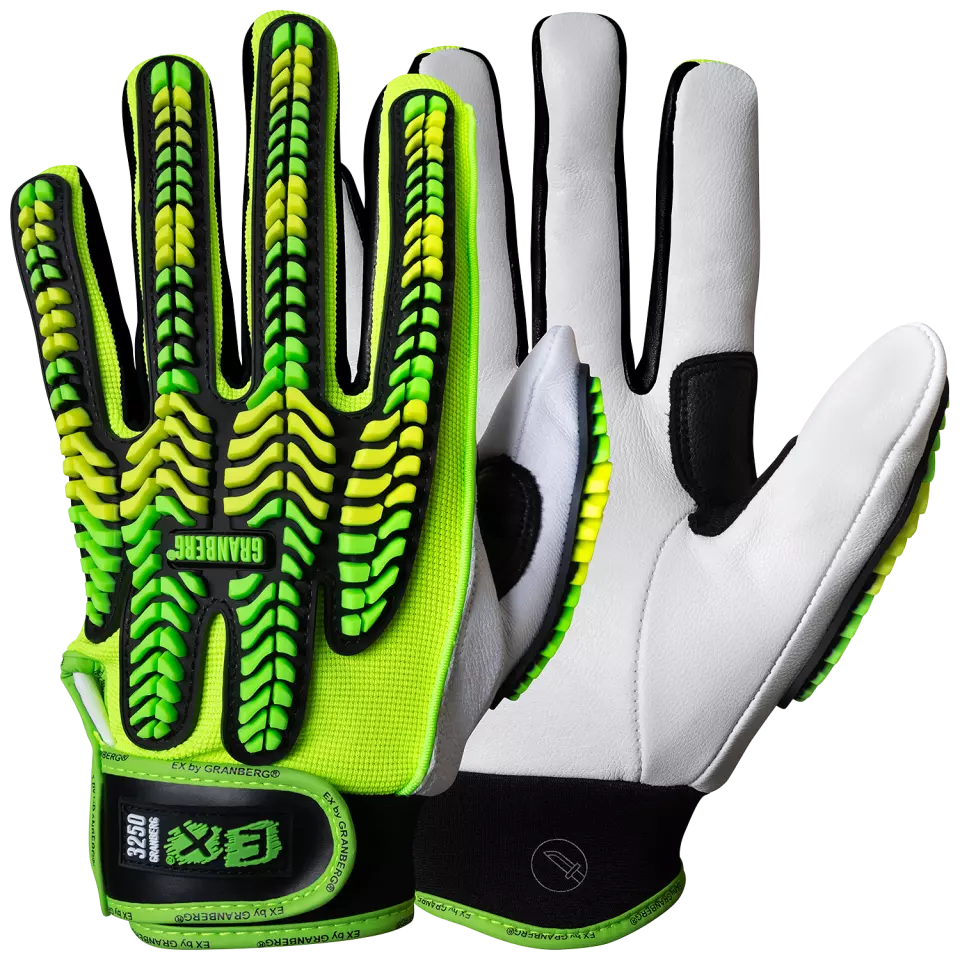
Features You'll Love

Cuff Style · Hook And Loop
Determines how the glove secures around the wrist, affecting fit, comfort, and protection coverage at the wrist area.

Coating Coverage · Palm And Finger
Indicates which areas of the glove have protective coating applied, affecting grip, protection, and dexterity in different parts of the hand.
Granberg
EX® Cut- and Impact-Resistant Gloves, Green/White, 6 pairs
EX® Cut- and Impact-Resistant Gloves, Green/White, 6 pairs
4.8 / 5
106,80 €
Price per 6 pairs
17,80 € / pair
Choose size
Free delivery
Features You'll Love

Cuff Style · Hook And Loop
Determines how the glove secures around the wrist, affecting fit, comfort, and protection coverage at the wrist area.

Coating Coverage · Palm And Finger
Indicates which areas of the glove have protective coating applied, affecting grip, protection, and dexterity in different parts of the hand.
Product description
These professional safety gloves combine high-level cut protection with impact resistance, featuring a cut-resistant liner rated to EN 388:2016 level D in the palm and fingers. The durable goatskin leather palm provides excellent grip in both wet and dry conditions, while the TPR impact protection on the back of the hand offers superior safety against crushing and impact injuries. The breathable Spandex back and adjustable hook and loop wrist closure ensure a comfortable, secure fit during extended wear.
Product Features:
- Cut-resistant liner in palm and fingers
- TPR impact protection on back of hand
- Full goatskin leather palm construction
- Breathable Spandex back material
- Adjustable hook and loop wrist closure
- Reinforced thumb base
Technical Details:
- Leather thickness: 0.7-0.9 mm
- Palm material: Goatskin
- Back material: Polyester/Spandex
- Lining: Cut-resistant (palm and fingers)
- Grip type: Suitable for dry and wet conditions
Protection Ratings:
- CE Category II certified
- EN 388:2016 ratings:
—Abrasion resistance: Level 2
—Tear resistance: Level 3
—Puncture resistance: Level 2
—Cut resistance: Level D
- ANSI Cut resistance: A3
- ANSI Impact protection: Level 2
- Contact heat: Level 1
Recommended Applications:
- Tasks with cut and impact injury risks
- Dry weather operations
- Precision handling work
Standards:
- EN ISO 21420:2020
- UKCA certified